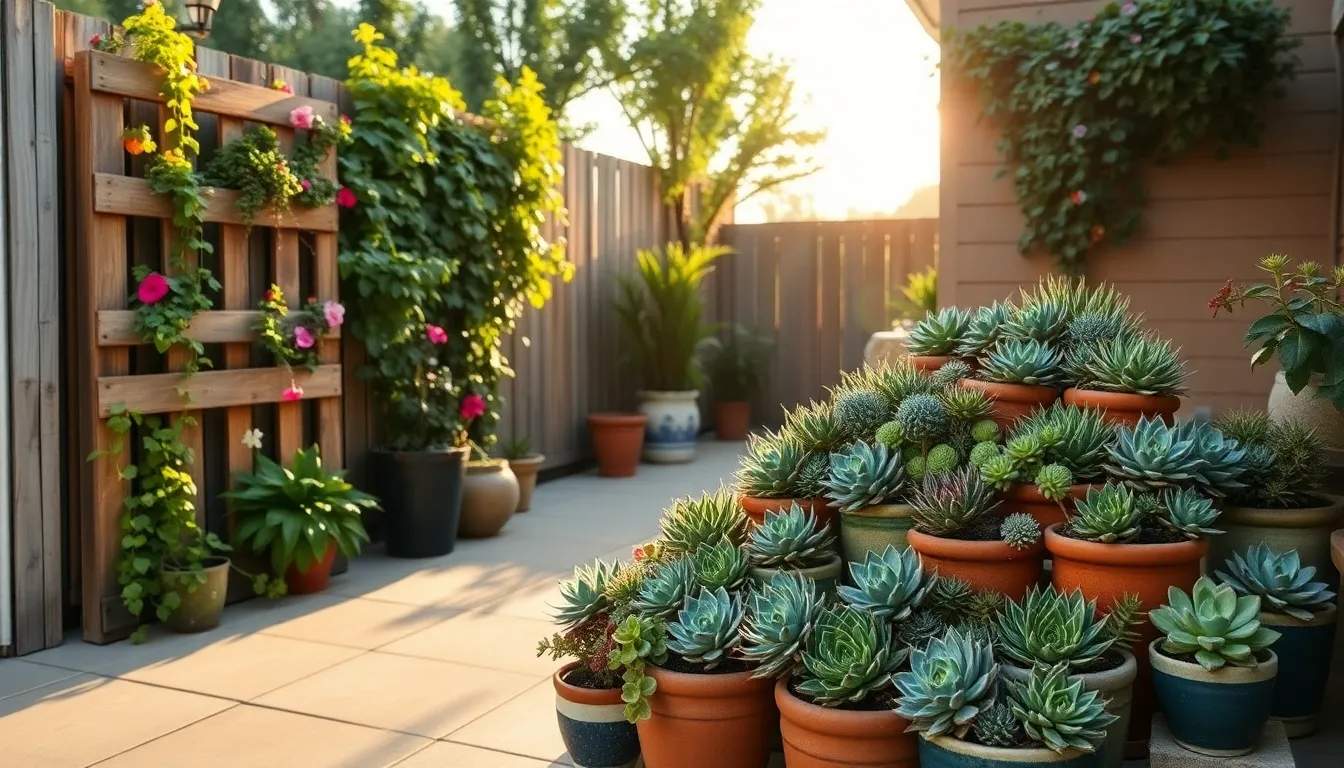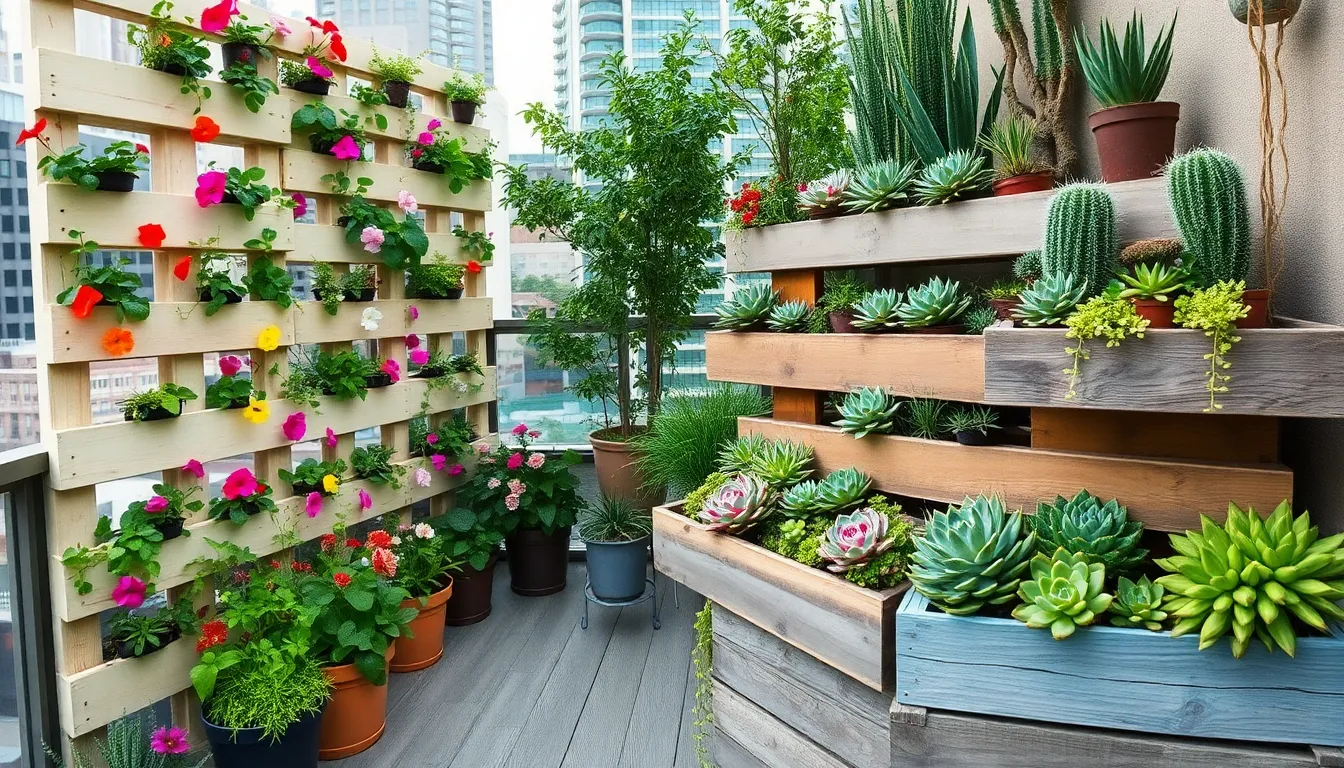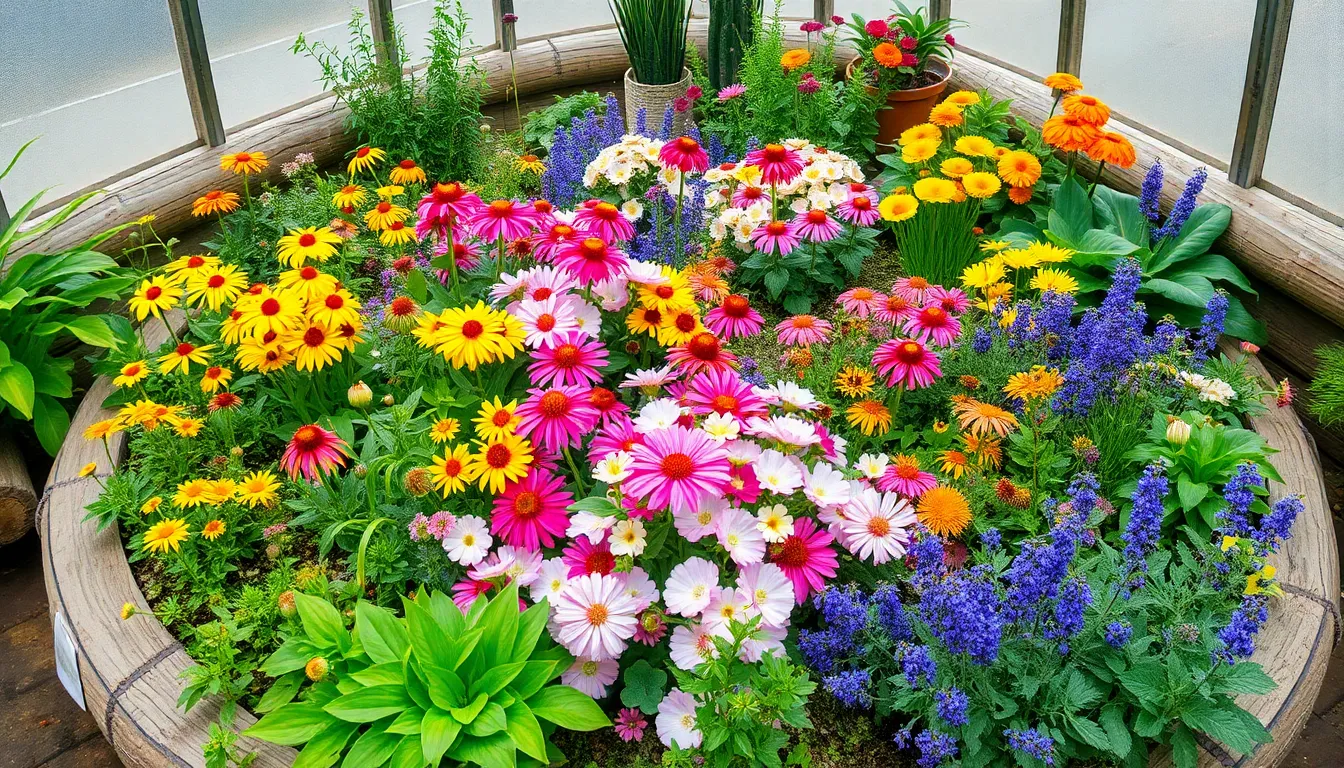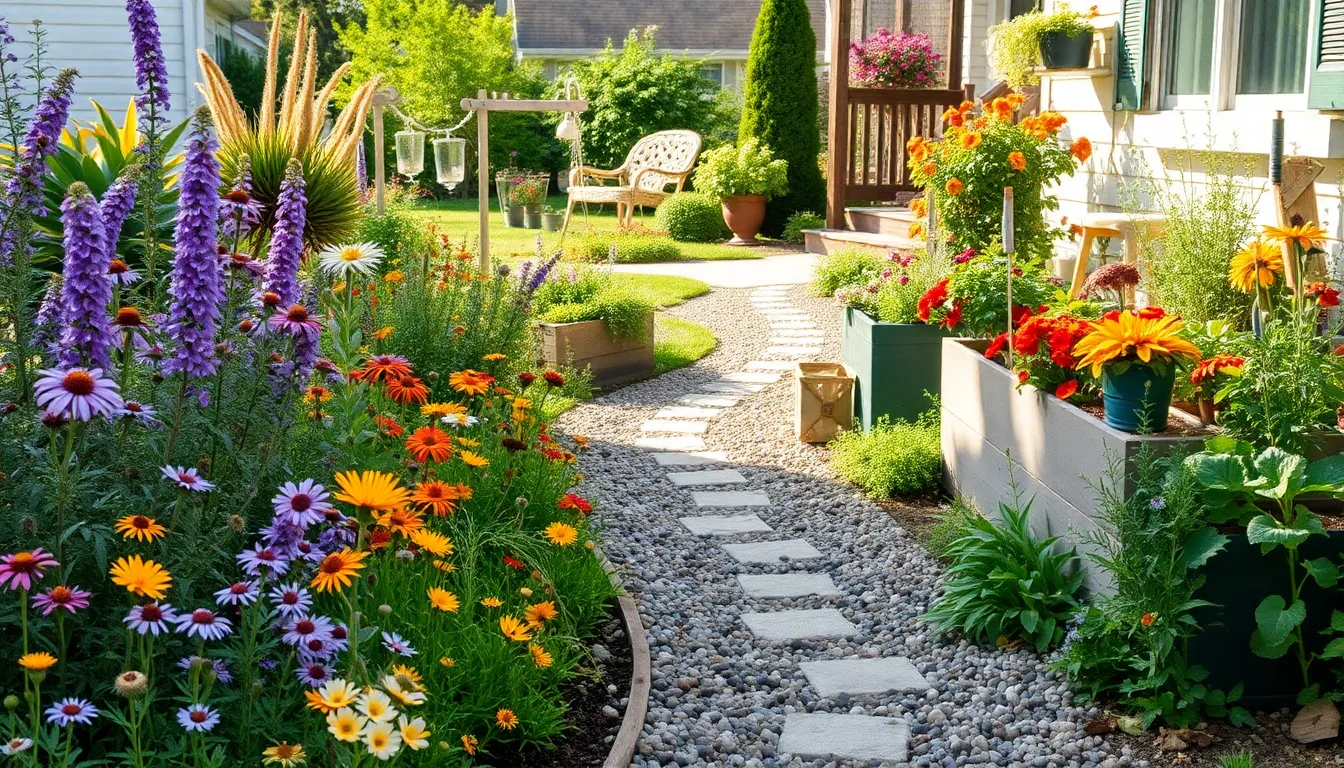Welcome to “10 Easy Patio Garden Ideas,” where the joy of gardening meets the convenience of compact, stylish spaces! Whether you’re a budding gardener eager to dip your toes into the world of green or a seasoned plant enthusiast looking to transform your patio into a vibrant oasis, this guide offers something special for everyone. With each idea carefully curated to inspire creativity and ensure success, you’ll find yourself brimming with confidence and excitement as you embark on your patio gardening journey.
In this guide, we’ve gathered a bouquet of ideas that cater to all skill levels, ensuring that you can effortlessly cultivate beauty and bounty right outside your door. Each concept has been selected not only for its aesthetic charm but also for its practical benefits, from space-saving techniques to low-maintenance plant selections. With our easy-to-follow advice, you’ll soon discover how simple it is to create a personal paradise, no matter the size of your patio. Get ready to experience the sheer delight and satisfaction that comes with nurturing your very own garden haven!
Choose Compact Plant Varieties
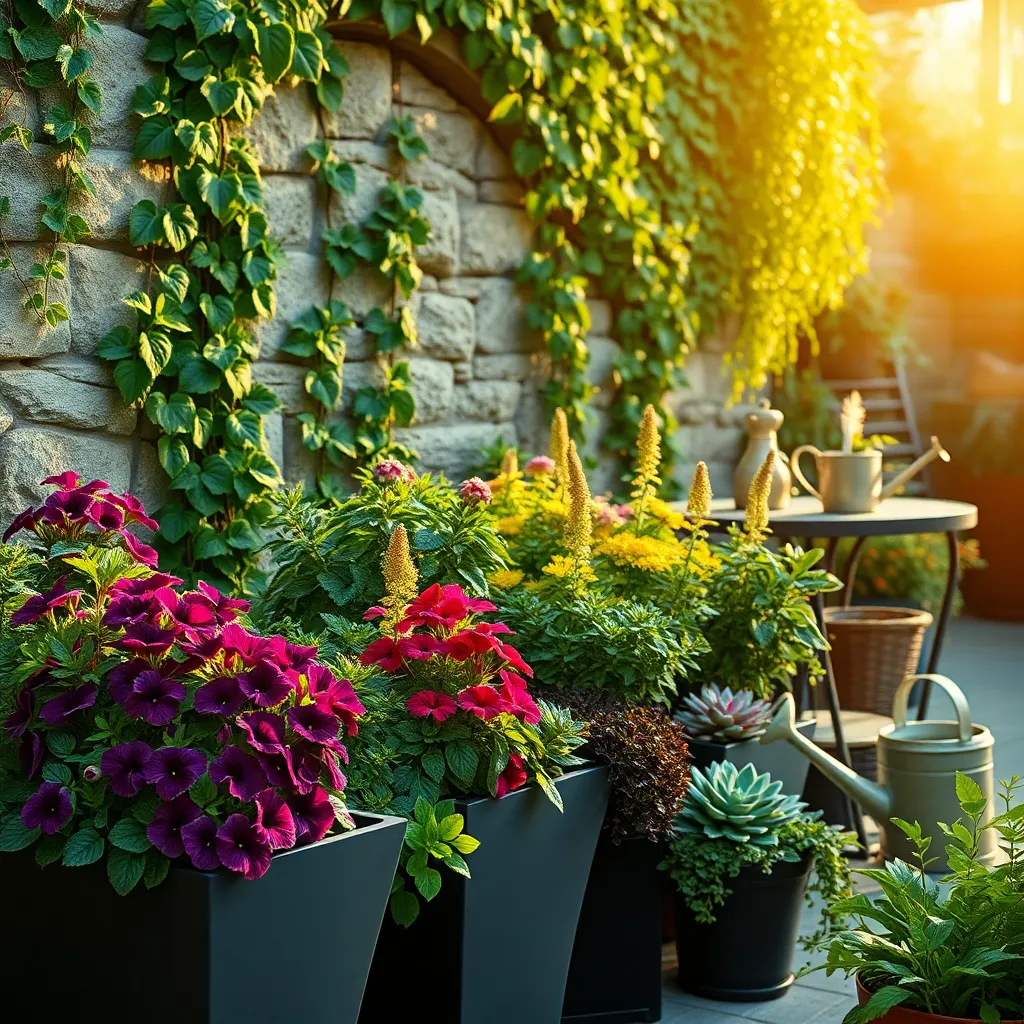
For a successful patio garden, consider selecting compact plant varieties that thrive in limited spaces. These plants are specifically bred to stay small while still producing abundant foliage, flowers, or even fruit.
One excellent choice for compact growing is cherry tomatoes, which can flourish in pots with adequate sunlight. Ensure they receive at least six hours of direct sunlight daily and water them consistently to keep the soil moist but not waterlogged.
Herbs like basil, thyme, and chives are ideal for patio gardens due to their compact size and culinary versatility. Plant them in well-draining potting soil and place them in a sunny spot, watering when the top inch of soil feels dry to the touch.
For those looking to add some color, choose dwarf varieties of marigolds or petunias, which bloom profusely without taking up too much room. These flowers prefer full sun and should be deadheaded regularly to encourage continuous blooming.
Use Vertical Garden Structures
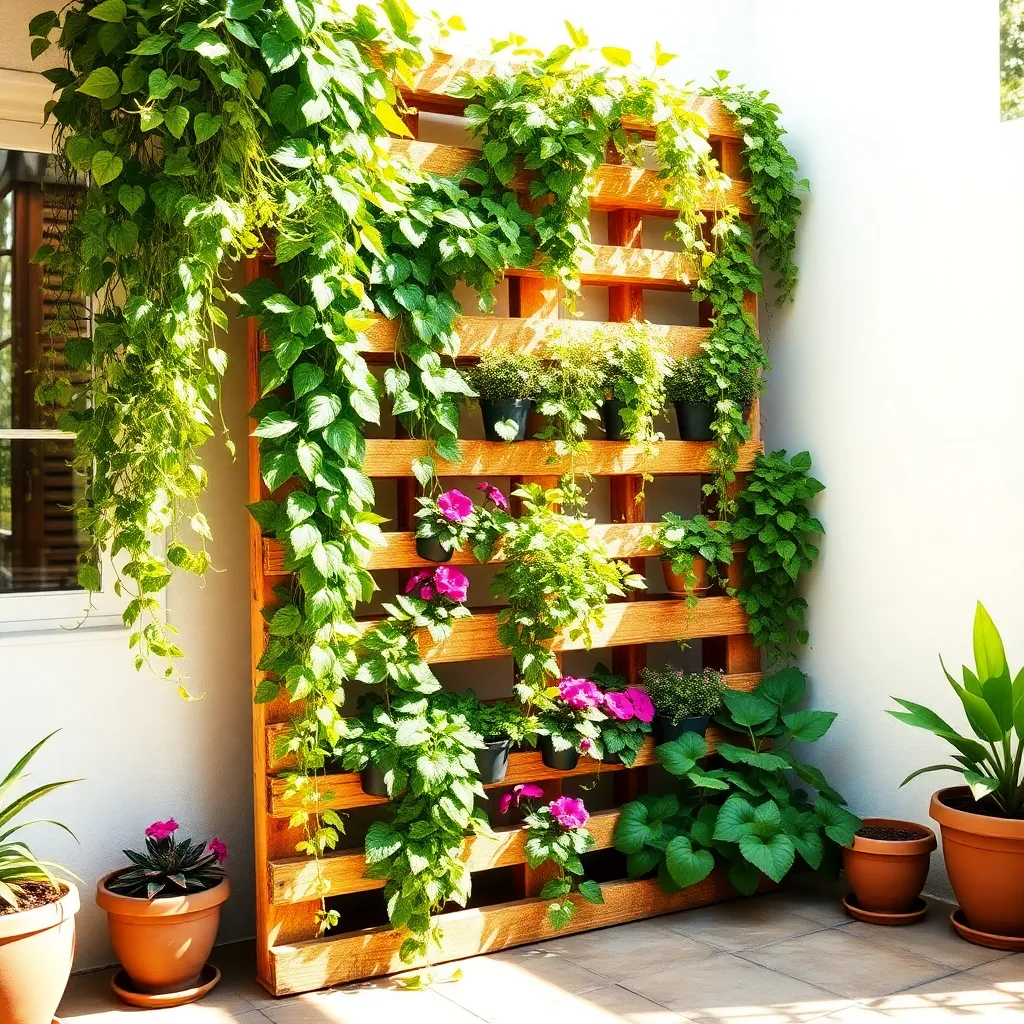
Maximize your patio space by incorporating vertical garden structures, which are perfect for small areas. They allow you to grow more plants without taking up valuable ground space, making them ideal for patios.
Consider using trellises, wall planters, or even hanging baskets to create a lush, green wall. These structures not only add beauty but also support plants that naturally climb, like beans, peas, or even vining flowers.
When selecting plants for vertical gardening, choose those that thrive in containers and vertical environments. Herbs like basil and thyme are excellent choices as they require minimal space and are easy to harvest.
Advanced gardeners might experiment with hydroponic vertical systems, which can yield impressive growth rates. These systems can be a bit more complex but are worth the effort for those passionate about maximizing their patio garden’s potential.
Ensure your vertical garden receives adequate sunlight, as many of these plants need full sun to thrive. Watering can be a challenge with vertical setups, so consider installing a drip irrigation system to keep your plants healthy and hydrated.
Install Self-Watering Planters
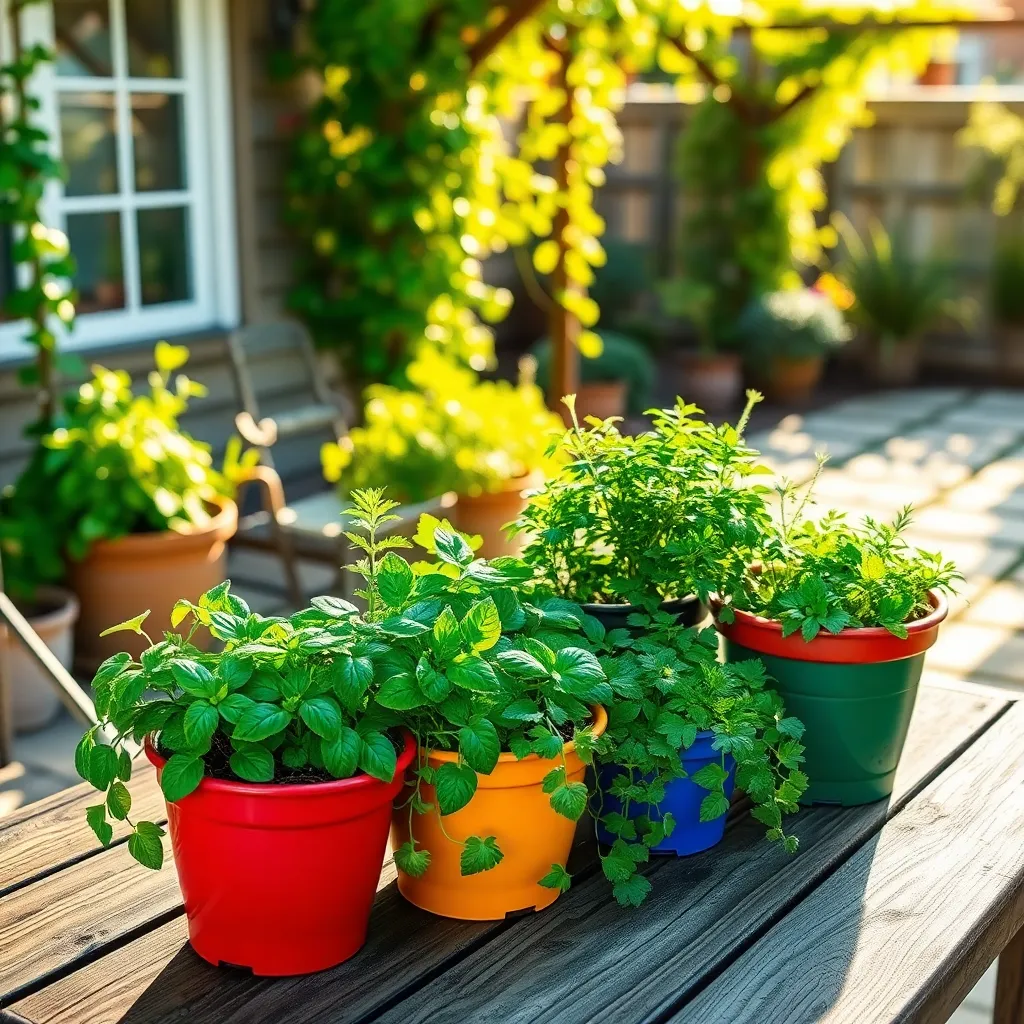
Transforming your patio with self-watering planters can be a game-changer for both new and seasoned gardeners. These planters are designed to make plant care easier by providing a consistent water supply, reducing the frequency of manual watering.
To get started, choose a self-watering planter that suits the size of your plants, ensuring it has a built-in reservoir. This reservoir allows plants to draw water as needed, promoting healthier root systems.
Fill the planter with a lightweight, well-draining potting mix to prevent waterlogging and encourage root growth. Avoid garden soil, which can compact and hinder water movement within the planter.
For optimal results, try incorporating a slow-release fertilizer into the potting mix at the start of the growing season. This provides a steady supply of nutrients, helping your plants thrive with minimal maintenance.
Advanced gardeners can experiment with different types of plants to see which ones benefit most from self-watering systems. Herbs, tomatoes, and leafy greens are excellent choices, as they typically require consistent moisture levels to flourish.
Finally, monitor the water level in the reservoir regularly, especially during hot weather, to ensure your plants remain hydrated. This simple check will help prevent the common issue of overwatering, which can lead to root rot and other complications.
Opt for Lightweight Containers
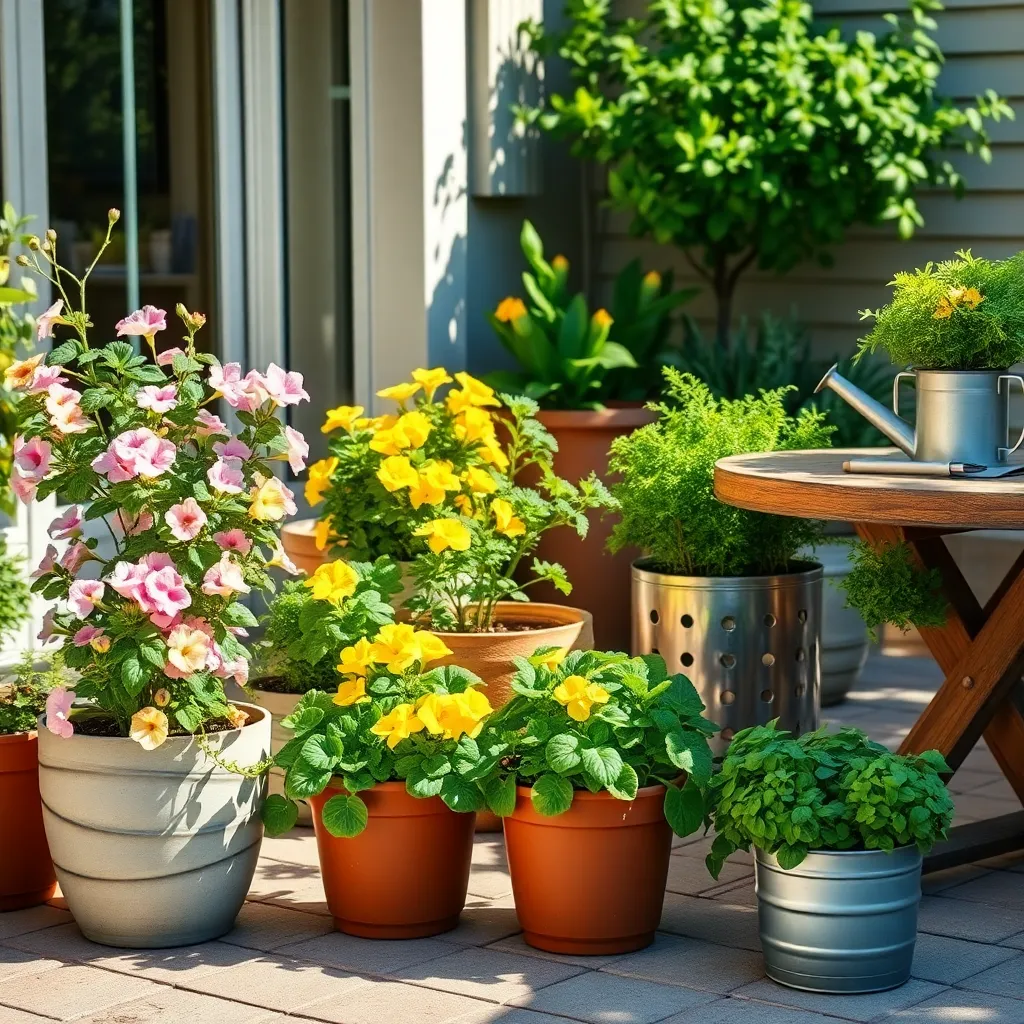
When creating a patio garden, choosing lightweight containers can make a significant difference in ease of maintenance. These containers are not only easier to move, but they also allow for better flexibility in rearranging your patio setup as needed.
Opt for containers made of materials like plastic, fiberglass, or resin, which are generally lighter than traditional clay or concrete pots. These materials are also durable and can withstand various weather conditions, making them a practical choice for outdoor use.
It’s important to ensure that your lightweight containers have good drainage to prevent root rot. Drill additional holes if necessary, and consider using a potting mix that includes perlite or vermiculite to enhance aeration and drainage.
For beginners, start with smaller containers to easily manage plant care and gradually move to larger sizes as you gain confidence. This approach allows you to experiment with different plant types and growing conditions without becoming overwhelmed.
Advanced gardeners might explore using self-watering inserts in their lightweight containers to reduce watering frequency and maintain consistent soil moisture. This technique can help support plant health during hot summer months or when you’re away for a few days.
Create a Colorful Foliage Mix
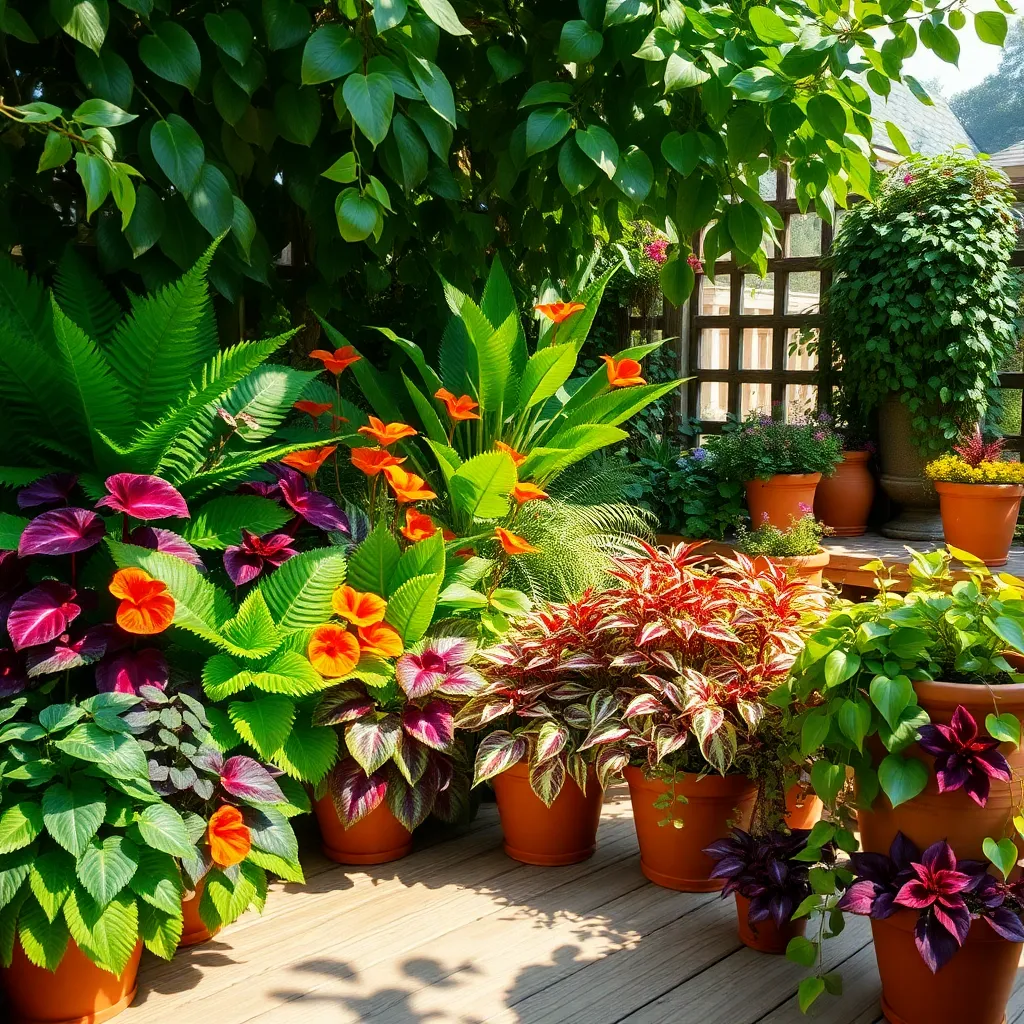
Creating a colorful foliage mix on your patio can transform it into a vibrant oasis. Start by selecting plants with leaves in a variety of colors, shapes, and sizes to add visual interest.
Consider using plants like coleus, which comes in an array of striking colors and patterns, or the bold foliage of caladiums. These plants thrive in partial shade and require well-draining soil that’s kept consistently moist.
For more texture and contrast, incorporate grasses like the purple fountain grass or the variegated Japanese sedge. These grasses prefer full sun to partial shade and will add a dynamic element with their movement and form.
To maintain a balanced composition, position larger plants towards the back or center and smaller ones along the edges. Regularly rotate your containers to ensure even exposure to sunlight, promoting uniform growth.
For an advanced tip, experiment with the layering technique by planting taller species in the center or back and cascading types like sweet potato vine or creeping Jenny in the front. This not only maximizes space but also enhances the depth and richness of your foliage display.
Incorporate Edible Herb Pots
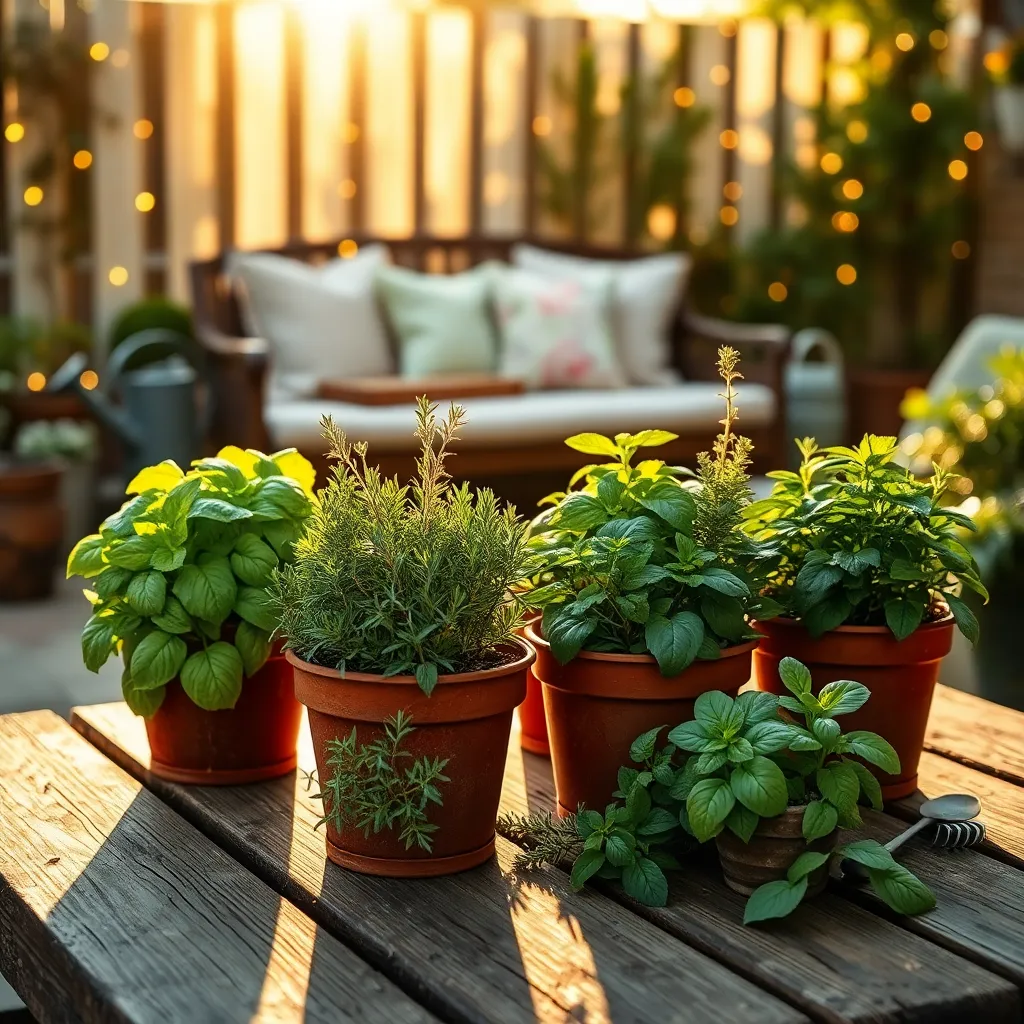
Integrating edible herb pots into your patio garden is both a delightful and practical choice. Not only do they offer fresh flavors for your culinary creations, but they also add a lush, green aesthetic to your outdoor space.
Selecting the right herbs is key to a successful herb pot garden. Consider starting with easy-to-grow options like basil, mint, and parsley, which thrive in a variety of conditions.
Ensure your pots have good drainage by choosing containers with holes at the bottom. Herbs generally prefer well-draining soil, so mix potting soil with a bit of sand or perlite for optimal growth.
Herbs typically require about 6 hours of sunlight per day, so place your pots in a sunny spot on the patio. Regular watering is crucial, but be careful not to overwater; herbs prefer their soil to dry out slightly between waterings.
For those ready to take their herb gardening to the next level, consider experimenting with companion planting. Pair herbs like rosemary and thyme, which have similar growth requirements, in the same pot for a thriving mini ecosystem.
Regularly harvest your herbs to encourage new growth and prevent them from becoming leggy. This not only keeps the plants healthy but also ensures you have a constant supply of fresh herbs at your fingertips.
Arrange Plants for Maximum Sun
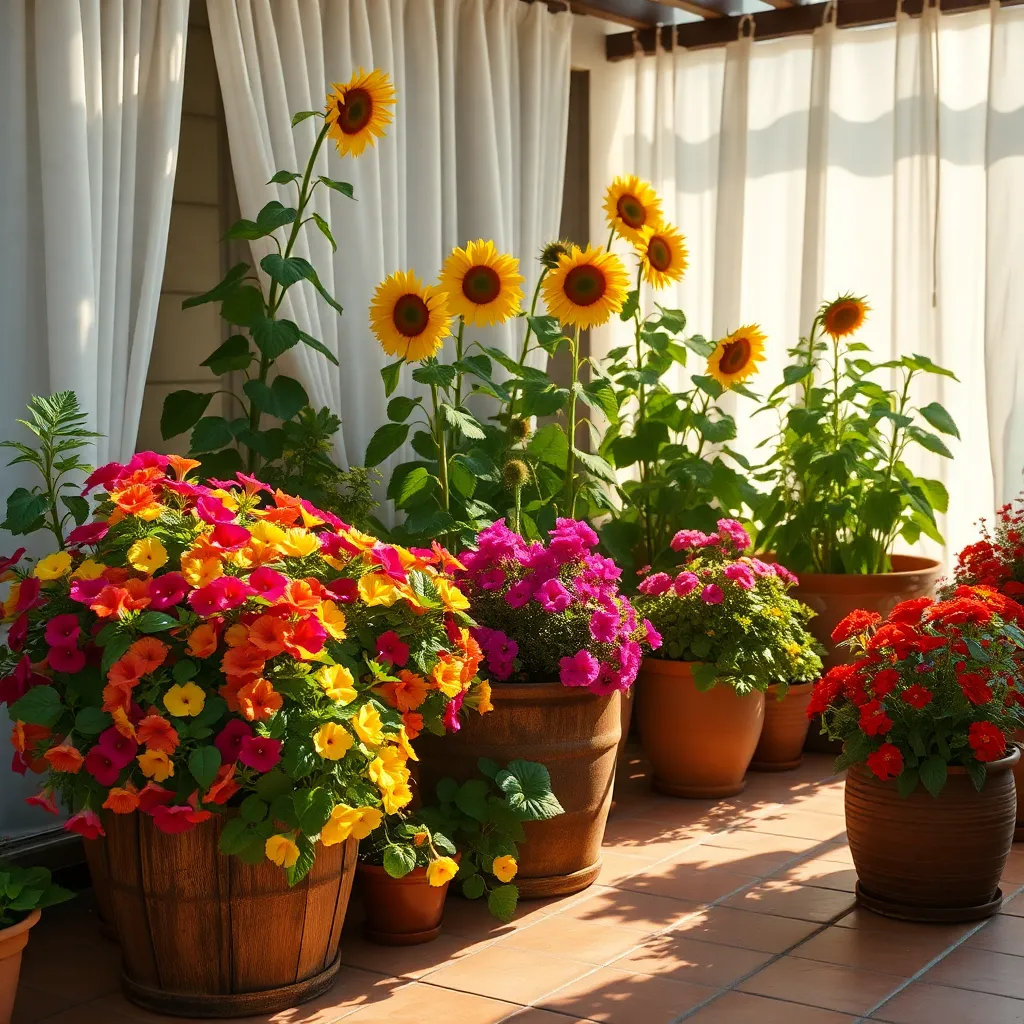
Maximizing sunlight for your patio garden can significantly enhance plant growth. Begin by observing your patio’s sun patterns throughout the day to identify areas that receive the most sunlight.
Consider placing sun-loving plants like tomatoes and peppers in these sunny spots. These plants thrive with at least six to eight hours of direct sunlight each day, which promotes robust growth and fruitful yields.
For shade-tolerant plants, such as ferns or hostas, select areas that receive filtered or indirect sunlight. This will prevent leaf scorch and help maintain their lush, green appearance.
Using plant stands or tiered shelving can help arrange plants at different heights to optimize sun exposure. This approach ensures that smaller plants aren’t overshadowed by taller ones, allowing each to get adequate light.
Additionally, rotating your pots every few weeks can ensure even growth as it allows all sides of the plant to receive sunlight. Regularly check for signs of sun stress, such as wilting or leaf burn, and adjust their placement as needed.
Incorporate lightweight, movable containers to easily reposition plants according to the changing seasons. Flexibility in plant placement will help you maintain a thriving patio garden year-round.
Add Decorative Outdoor Lighting
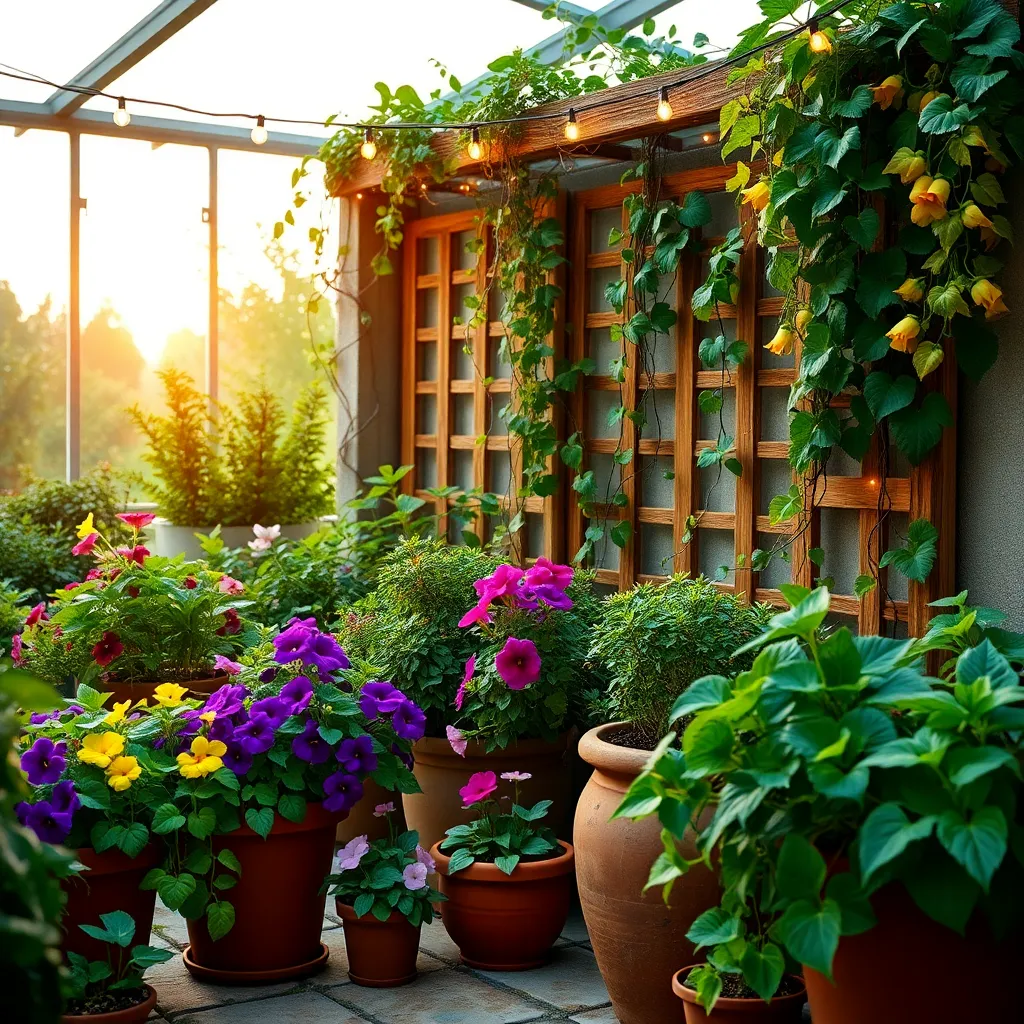
Enhancing your patio garden with decorative outdoor lighting can transform your space into a magical evening retreat. Choose solar-powered lights for an eco-friendly option that requires minimal maintenance and expense.
Start by placing lights strategically to highlight specific garden features, such as a favorite plant or a cozy seating area. String lights draped around trees or pergolas add a warm, inviting glow that’s perfect for outdoor gatherings.
For a more sophisticated look, consider using low-voltage landscape lighting along pathways or around the perimeter of your patio. This not only improves safety but also adds depth and dimension to your garden at night.
Experiment with different types of lighting, such as lanterns, spotlights, and fairy lights, to create varied and interesting effects. Ensure that all electrical components are waterproof and suitable for outdoor use to avoid any safety issues.
Incorporate Multi-Level Plant Stands
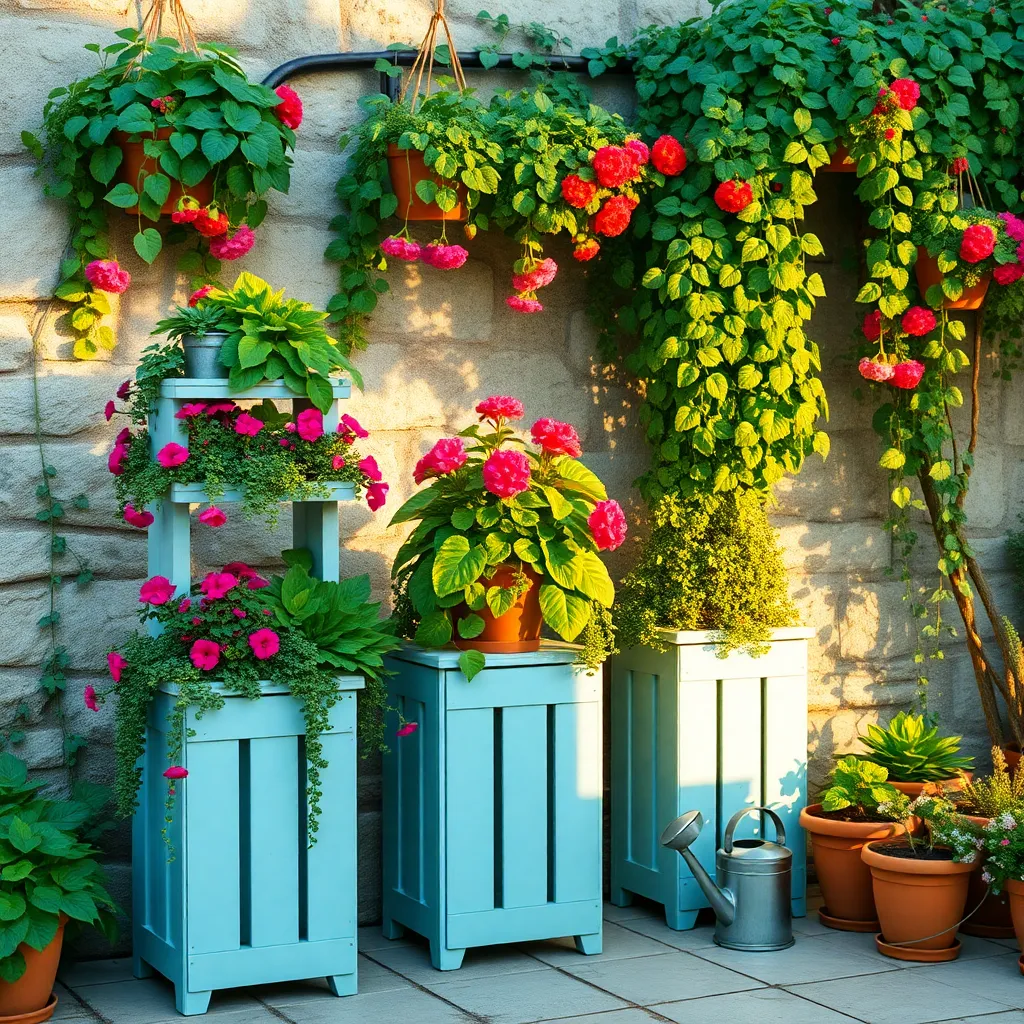
Transform your patio into a lush oasis by incorporating multi-level plant stands. These stands not only maximize vertical space but also create a visually appealing display of varied plant heights and textures.
Begin by selecting sturdy plant stands that can support the weight of your pots and are resistant to outdoor elements. Consider using stands made from materials like metal or treated wood, which offer durability and weather resistance.
When arranging your plants, place those requiring more sunlight on the top levels to ensure they receive adequate light. Meanwhile, shade-loving plants can thrive on lower tiers, where they are partially protected from direct sun exposure.
To add diversity, include a mix of trailing plants, such as ivy or pothos, alongside upright plants like snake plants or ferns. This not only enhances the aesthetic appeal but also allows different plants to support each other in terms of growth and health.
Watering needs can vary dramatically based on the plant type and placement on the stand, so check moisture levels regularly. For optimal growth, use a well-draining potting mix and ensure that each pot has drainage holes to prevent waterlogging.
Use Weather-Resistant Furniture
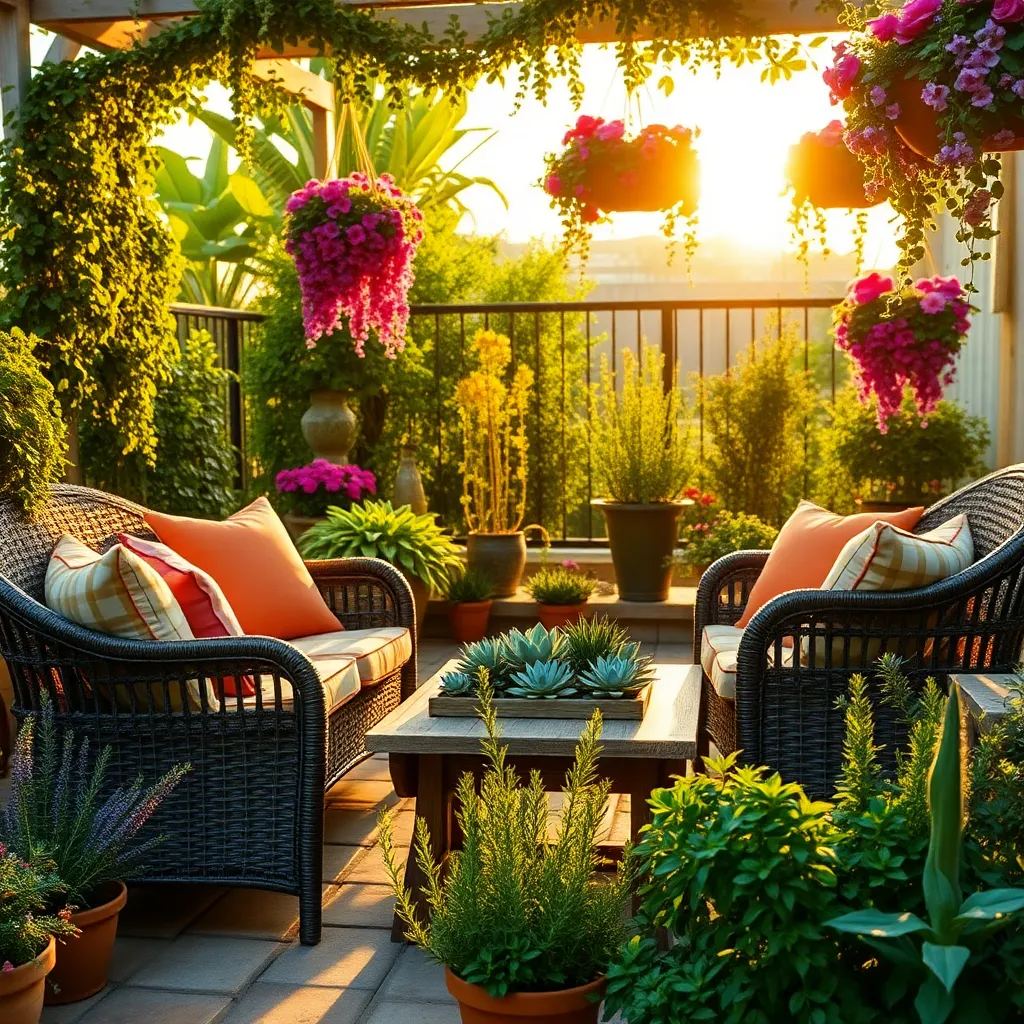
Choosing weather-resistant furniture for your patio garden is essential for maintaining a beautiful and functional outdoor space. Opt for materials like teak, aluminum, or synthetic wicker, as these are known for their durability and resistance to various weather conditions.
Weather-resistant pieces not only withstand the elements but also require less maintenance, giving you more time to enjoy your garden. Consider selecting furniture with UV-resistant finishes to prevent fading and wear from the sun, ensuring longevity and aesthetic appeal.
Incorporating cushions made from outdoor fabrics like Sunbrella can enhance comfort while being resistant to mold and mildew. This choice not only prolongs the life of your furniture but also keeps your seating area looking fresh and inviting for guests.
Additionally, investing in furniture covers can further protect your pieces during harsh weather, extending their lifespan. It’s a small step that ensures your outdoor seating remains a cozy and vibrant part of your patio garden year-round.
Conclusion: Growing Success with These Plants
In exploring the ’10 Easy Patio Garden Ideas,’ we’ve uncovered a bouquet of relationship concepts blooming with potential. From nurturing through consistent care to fostering growth by creating space for new experiences, these ideas serve as metaphors for cultivating strong, vibrant connections with loved ones. We’ve learned about the importance of diversity, embracing change, and maintaining balance, all crucial for a flourishing relationship. Just as a garden thrives on sunlight, relationships need warmth and positivity to blossom.
Now, take a moment to reflect on which of these concepts resonates most with your current relationship needs. As an actionable next step, choose one idea to implement today, whether it’s spending quality time or introducing a fresh, exciting activity into your partnership.
To ensure these insights are always within reach, bookmark this article as your relationship garden guide, ready to inspire growth whenever needed. Remember, nurturing relationships is a journey, not a destination; by tending to them with care and love, you’re setting the stage for lasting success. Here’s to a future filled with flourishing bonds and endless possibilities. Let’s cultivate love together! 🌿❤️

